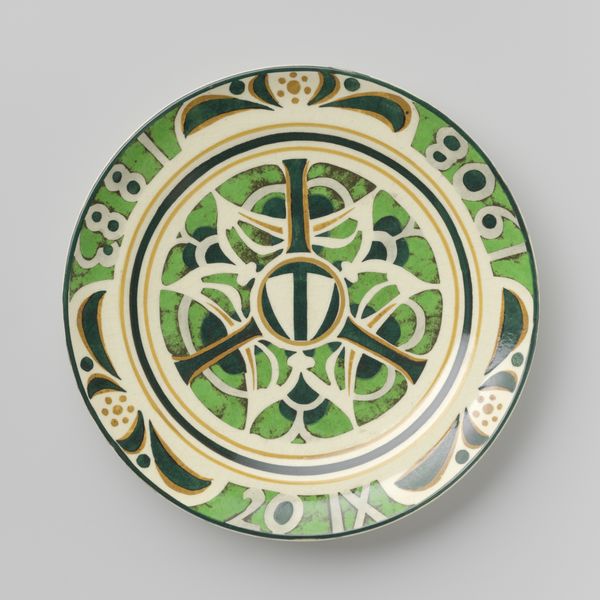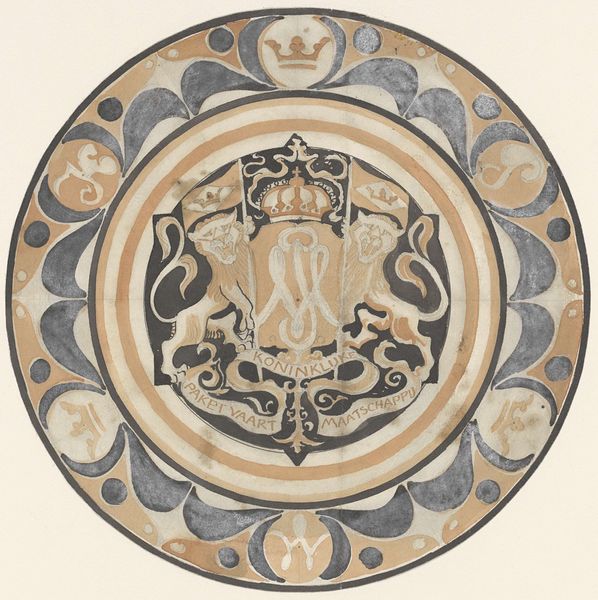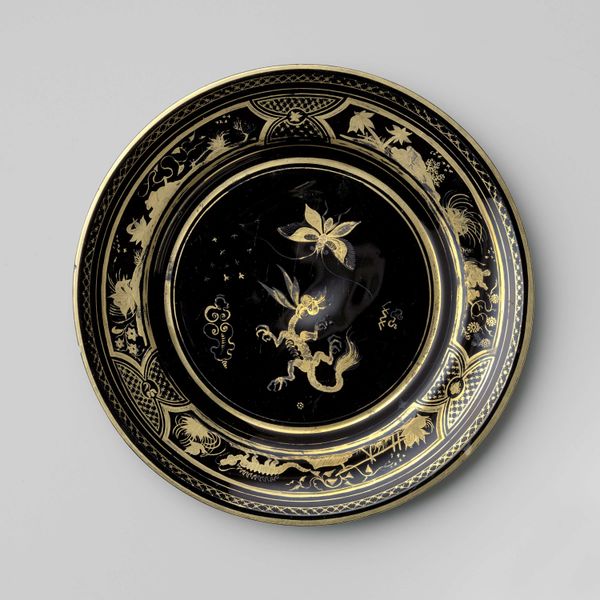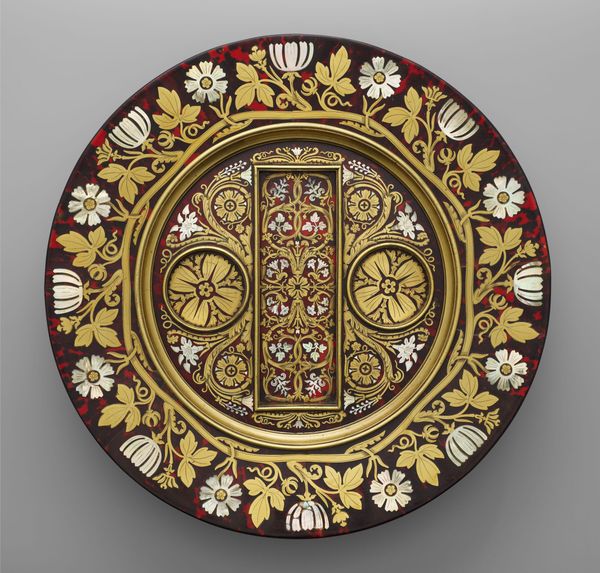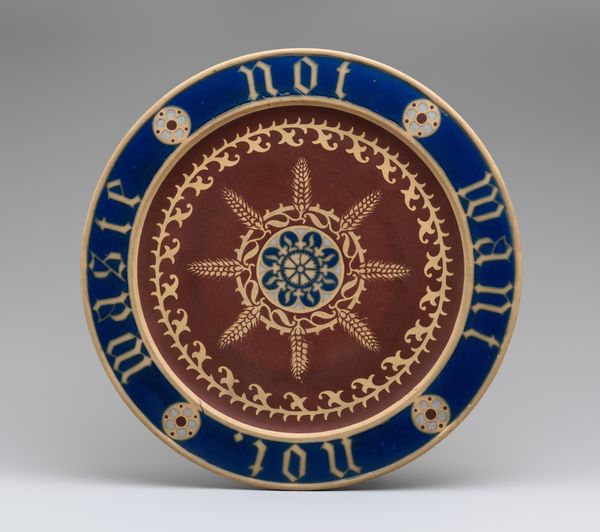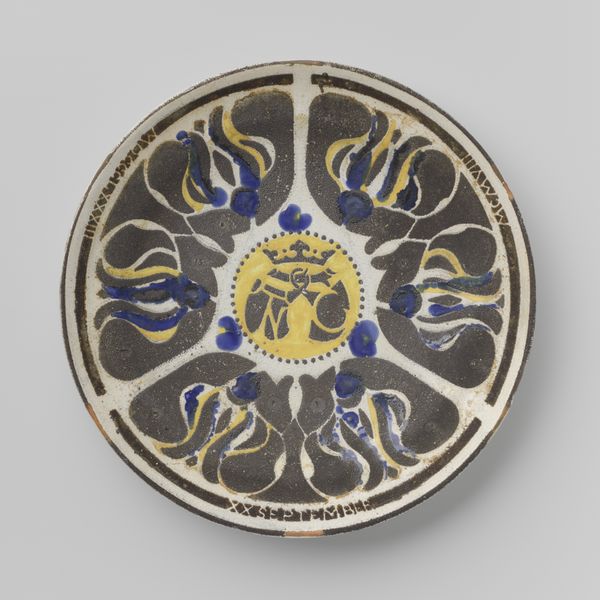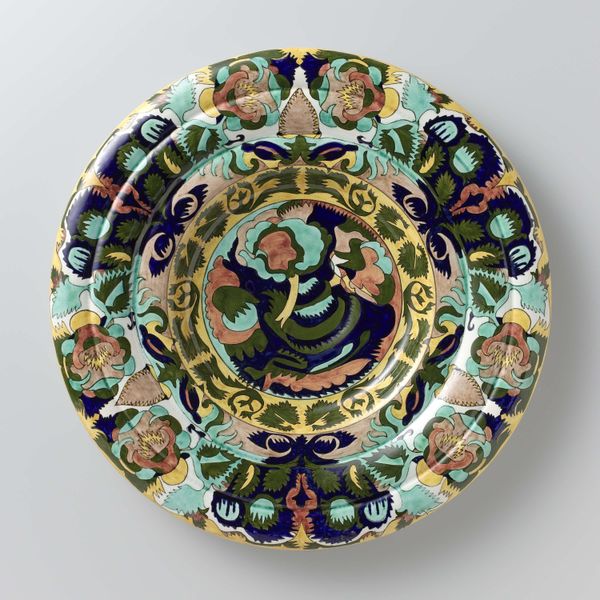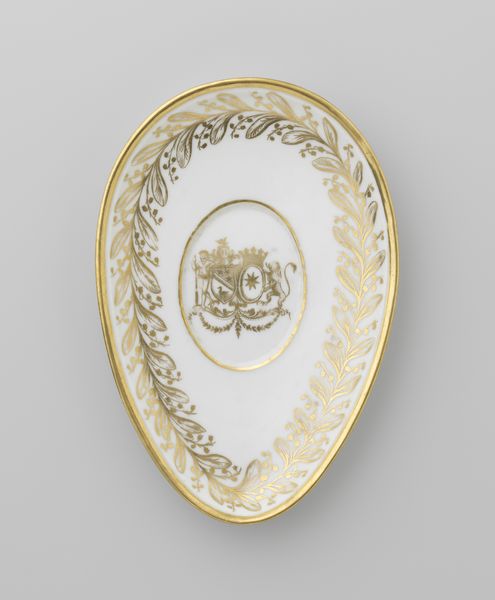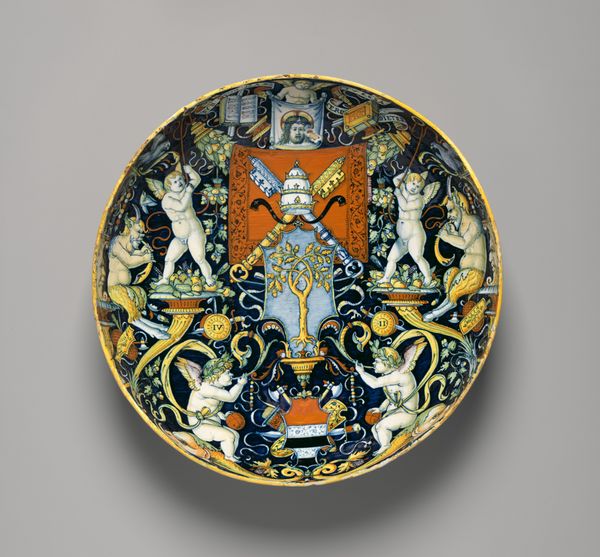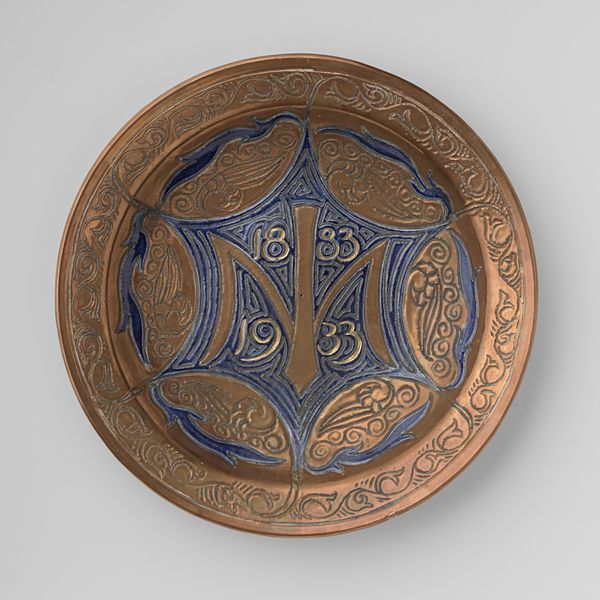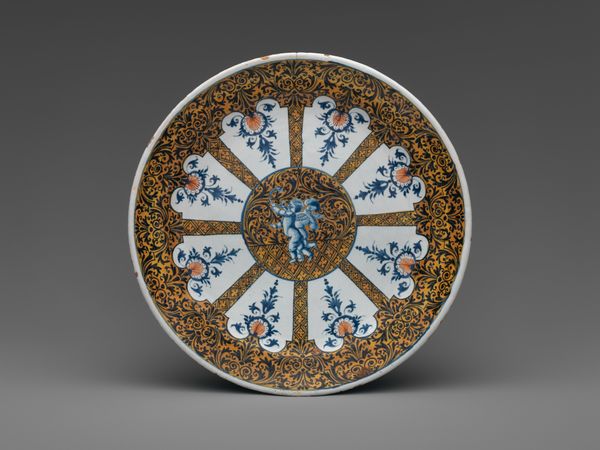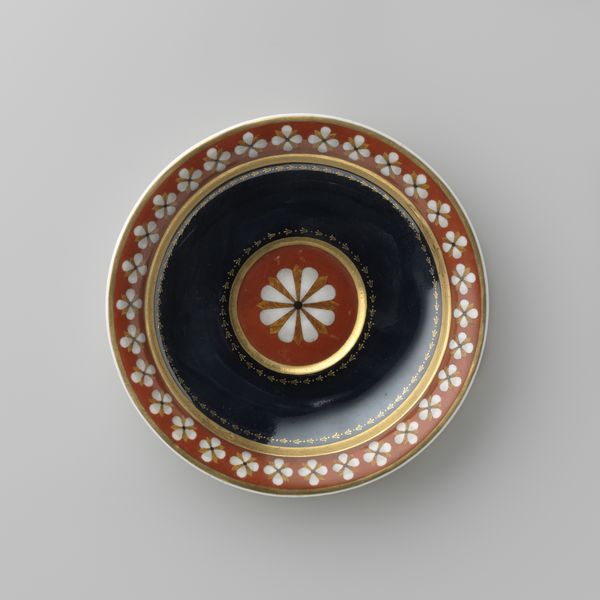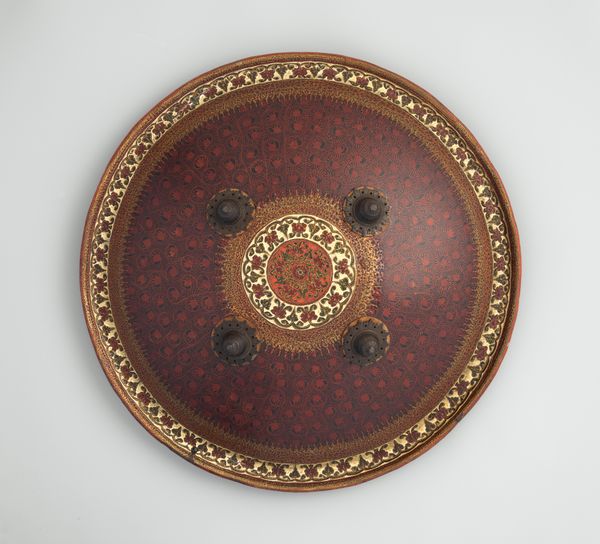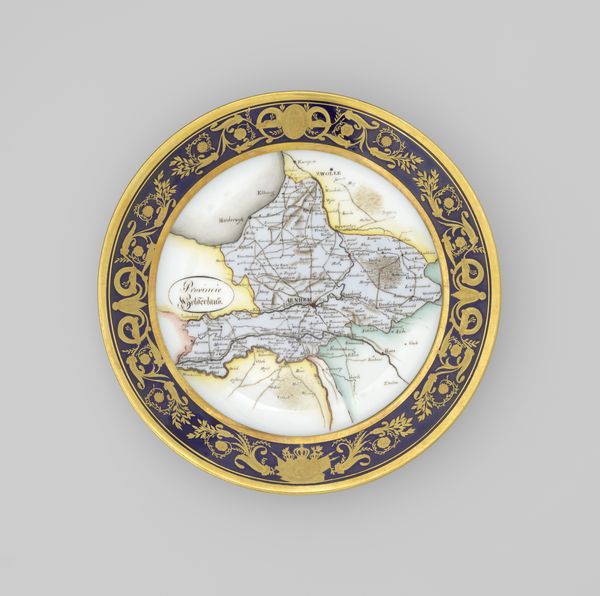
ceramic
#
art-nouveau
#
ceramic
#
decorative-art
Dimensions: height 2.2 cm, diameter 20.5 cm
Copyright: Rijks Museum: Open Domain
Curator: Here we have a commemorative plate dedicated to Princess Juliana, marking the first anniversary of her birth. It's dated 1910 and crafted in ceramic, attributed to Carel Adolph Lion Cachet. Editor: It has such a weighty, formal presence for something celebrating infancy! All those strong, symmetrical designs in dark brown and creamy white, set within the rigid geometry of the circle… Curator: The color palette is definitely characteristic of the Art Nouveau style—but even more compelling is how Cachet integrates a whole universe of iconography. Notice the dates of both Juliana’s birth in 1909, as well as this anniversary in 1910. This circular format invokes cycles and temporal continuity. Editor: Cycles that specifically celebrate a royal bloodline. Those curving foliate elements, the abstracted monograms circling the perimeter... the symbols of a future Queen are placed even before her own personal identity could form, all pressed into service of solidifying power! It almost feels oppressive. Curator: Consider though that the Netherlands has a unique historical relationship with the Royal House. Following centuries as a Republic, the monarchy offered a sense of unity and stability amidst tremendous social and political changes across Europe. The symbolism of crown and continuity must have had powerful resonance. Editor: Perhaps, and I recognize the specific historic circumstances within which this was produced, but this object’s decorative language seems aimed to ensure that power endures within existing frameworks rather than disrupting the status quo or acknowledging those outside it. How does a work of “decorative art” serve to normalize systems of authority? Curator: Well, this commemorative board isn't solely a display of status, but an expression of shared sentiments. Note how stylized yet relatable elements are placed with clear symbolic weight: this artwork carries meaning as well as serving its decorative function. It evokes royal connections across time, personal, and societal. Editor: I will concede it is certainly powerful. It evokes royal connection across time but still troubles me that in doing so, this symbolism and "shared sentiment" subtly yet insistently reinforces inherited status, making visible what could easily be left unspoken. Curator: Such intricate details warrant thoughtful attention. I will definitely reexamine how the formal qualities are also bound with the values, identity, and social structure of that moment. Editor: Precisely, prompting us to re-evaluate that relationship and explore those embedded assumptions further today.
Comments
No comments
Be the first to comment and join the conversation on the ultimate creative platform.
